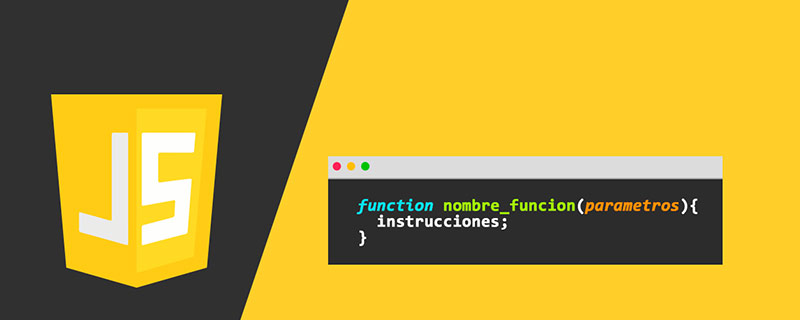This article will take you to understand the event loop in Node.js asynchronous programming. The event loop is a very important part of implementing Node's non-blocking I/O! Event loop and non-blocking I/O are all underlying capabilities of the C library LIBUV. Once you understand the event loop and non-blocking I/O, you will understand how Node's asynchronous operation works!

#Node’s own execution model, the event loop, is what makes callback functions so common. [Recommended learning: "nodejs Tutorial"]
When the process starts, Node will create a loop similar to while(true), and each time the loop is executed The physical process is called Tick. The process of each Tick is to check whether there is an event to be processed, and if so, retrieve the event and its related callback function. If associated callback functions exist, they are executed. Then enter the next loop. If there are no more events to handle, exit the process

Tick flow chart
The event loop is a very important part of realizing Node.js non-blocking I/O! Event loop and non-blocking I/O are the underlying capabilities of the LIBUV C library. Once you understand the event loop and non-blocking I/O, you will understand how the asynchronous operation of Node.js works!
Simulate eventloop through code
const eventloop = {
queue: [],
// 循环方法
loop() {
// 不停的检测队列是否还有未循环的消息
while (this.queue.length) {
const callback = this.queue.shift();
callback();
}
// 执行下一次循环
// 小知识点 JS的 this绑定
setTimeout(this.loop.bind(this), 50);
},
// 添加消息到队列
add(callback) {
this.queue.push(callback);
},
};
eventloop.loop();
setTimeout(() => {
eventloop.add(() => {
console.log("第一个");
});
}, 500);
setTimeout(() => {
eventloop.add(() => {
console.log("第二个");
});
}, 800);
The above is the most basic example of the event loop. We can add messages to it, and then it will check whether There are events that have not been processed. If there are, event processing will be performed.
Each event loop is a new call stack
For more programming-related knowledge, please visit:programming video! !
The above is the detailed content of Quickly understand the event loop in Node.js in one article. For more information, please follow other related articles on the PHP Chinese website!
 Vercel是什么?怎么部署Node服务?May 07, 2022 pm 09:34 PM
Vercel是什么?怎么部署Node服务?May 07, 2022 pm 09:34 PMVercel是什么?本篇文章带大家了解一下Vercel,并介绍一下在Vercel中部署 Node 服务的方法,希望对大家有所帮助!
 node.js gm是什么Jul 12, 2022 pm 06:28 PM
node.js gm是什么Jul 12, 2022 pm 06:28 PMgm是基于node.js的图片处理插件,它封装了图片处理工具GraphicsMagick(GM)和ImageMagick(IM),可使用spawn的方式调用。gm插件不是node默认安装的,需执行“npm install gm -S”进行安装才可使用。
 一文解析package.json和package-lock.jsonSep 01, 2022 pm 08:02 PM
一文解析package.json和package-lock.jsonSep 01, 2022 pm 08:02 PM本篇文章带大家详解package.json和package-lock.json文件,希望对大家有所帮助!
 怎么使用pkg将Node.js项目打包为可执行文件?Jul 26, 2022 pm 07:33 PM
怎么使用pkg将Node.js项目打包为可执行文件?Jul 26, 2022 pm 07:33 PM如何用pkg打包nodejs可执行文件?下面本篇文章给大家介绍一下使用pkg将Node.js项目打包为可执行文件的方法,希望对大家有所帮助!
 分享一个Nodejs web框架:FastifyAug 04, 2022 pm 09:23 PM
分享一个Nodejs web框架:FastifyAug 04, 2022 pm 09:23 PM本篇文章给大家分享一个Nodejs web框架:Fastify,简单介绍一下Fastify支持的特性、Fastify支持的插件以及Fastify的使用方法,希望对大家有所帮助!
 node爬取数据实例:聊聊怎么抓取小说章节May 02, 2022 am 10:00 AM
node爬取数据实例:聊聊怎么抓取小说章节May 02, 2022 am 10:00 AMnode怎么爬取数据?下面本篇文章给大家分享一个node爬虫实例,聊聊利用node抓取小说章节的方法,希望对大家有所帮助!
 手把手带你使用Node.js和adb开发一个手机备份小工具Apr 14, 2022 pm 09:06 PM
手把手带你使用Node.js和adb开发一个手机备份小工具Apr 14, 2022 pm 09:06 PM本篇文章给大家分享一个Node实战,介绍一下使用Node.js和adb怎么开发一个手机备份小工具,希望对大家有所帮助!
 图文详解node.js如何构建web服务器Aug 08, 2022 am 10:27 AM
图文详解node.js如何构建web服务器Aug 08, 2022 am 10:27 AM先介绍node.js的安装,再介绍使用node.js构建一个简单的web服务器,最后通过一个简单的示例,演示网页与服务器之间的数据交互的实现。


Hot AI Tools

Undresser.AI Undress
AI-powered app for creating realistic nude photos

AI Clothes Remover
Online AI tool for removing clothes from photos.

Undress AI Tool
Undress images for free

Clothoff.io
AI clothes remover

AI Hentai Generator
Generate AI Hentai for free.

Hot Article

Hot Tools

DVWA
Damn Vulnerable Web App (DVWA) is a PHP/MySQL web application that is very vulnerable. Its main goals are to be an aid for security professionals to test their skills and tools in a legal environment, to help web developers better understand the process of securing web applications, and to help teachers/students teach/learn in a classroom environment Web application security. The goal of DVWA is to practice some of the most common web vulnerabilities through a simple and straightforward interface, with varying degrees of difficulty. Please note that this software

Atom editor mac version download
The most popular open source editor

SecLists
SecLists is the ultimate security tester's companion. It is a collection of various types of lists that are frequently used during security assessments, all in one place. SecLists helps make security testing more efficient and productive by conveniently providing all the lists a security tester might need. List types include usernames, passwords, URLs, fuzzing payloads, sensitive data patterns, web shells, and more. The tester can simply pull this repository onto a new test machine and he will have access to every type of list he needs.

Dreamweaver Mac version
Visual web development tools

Zend Studio 13.0.1
Powerful PHP integrated development environment







